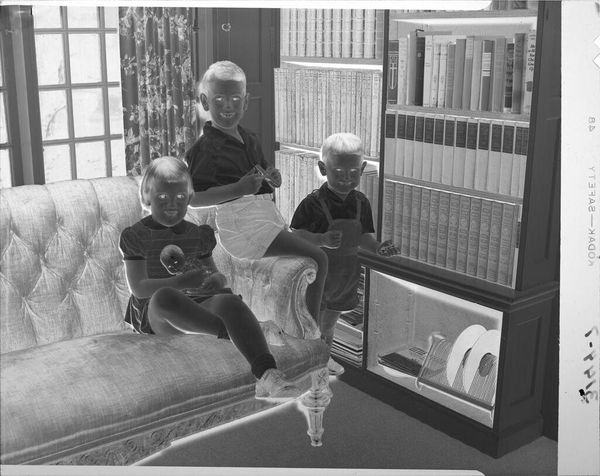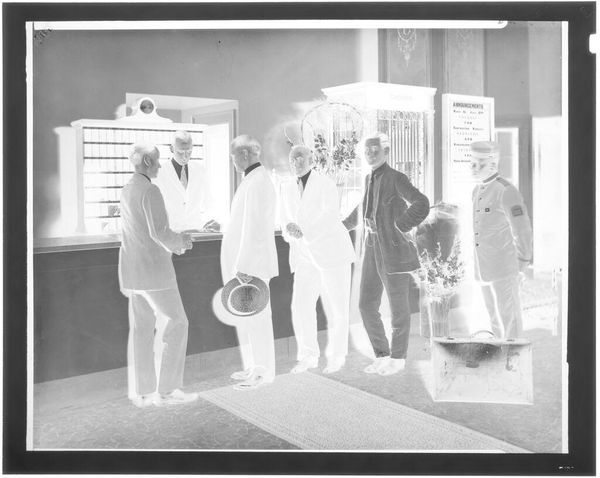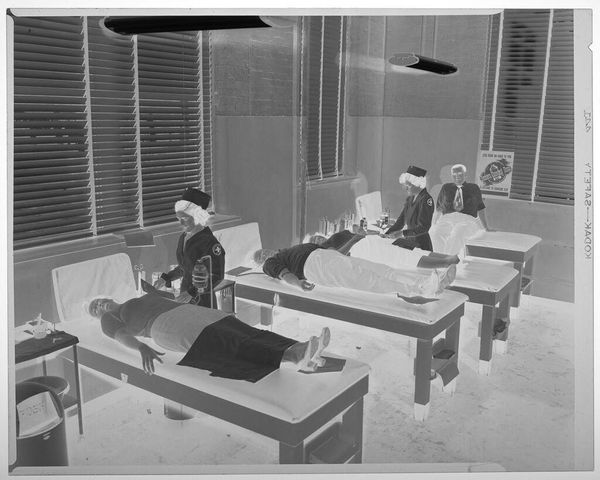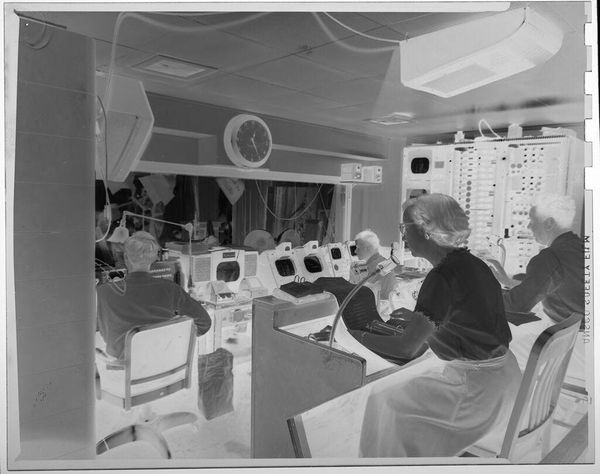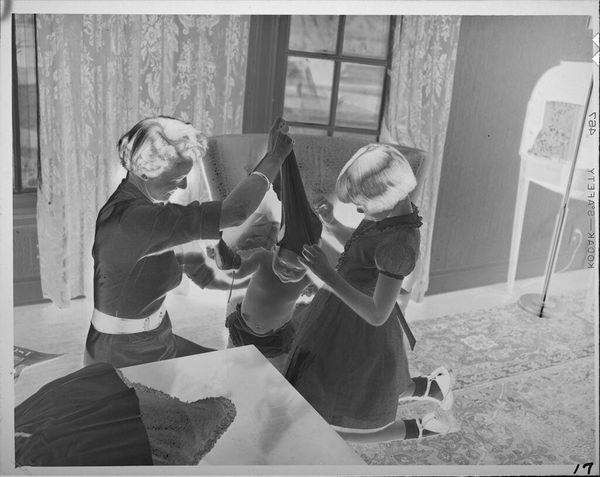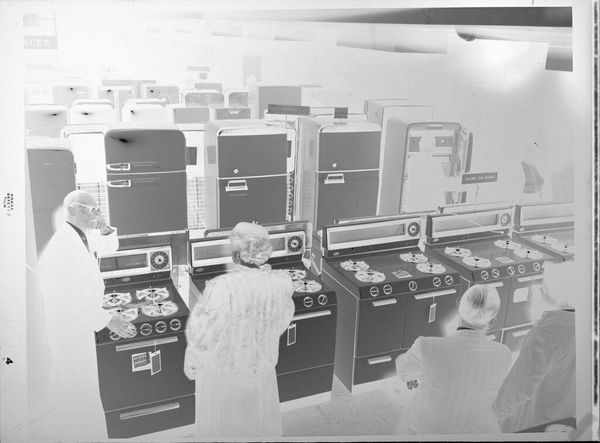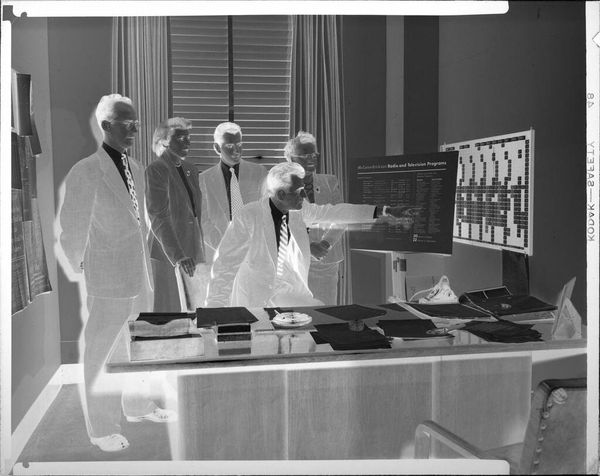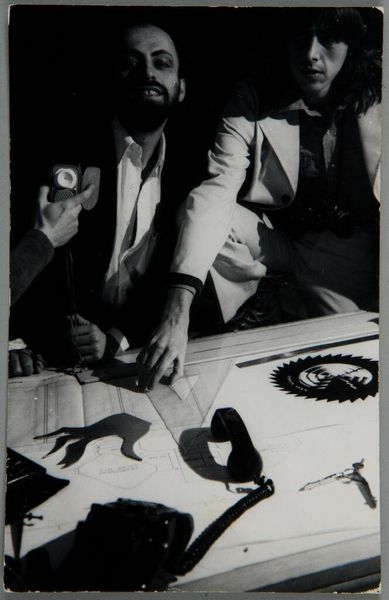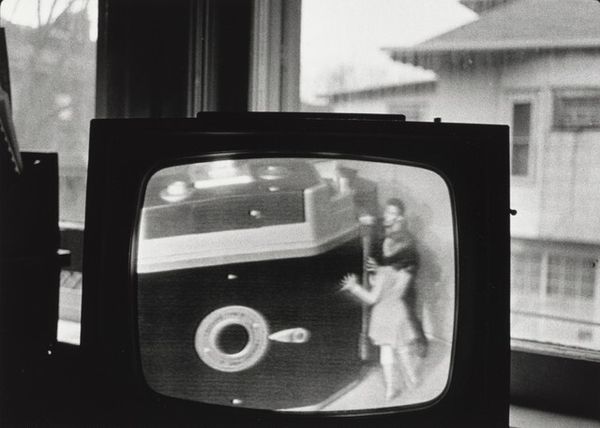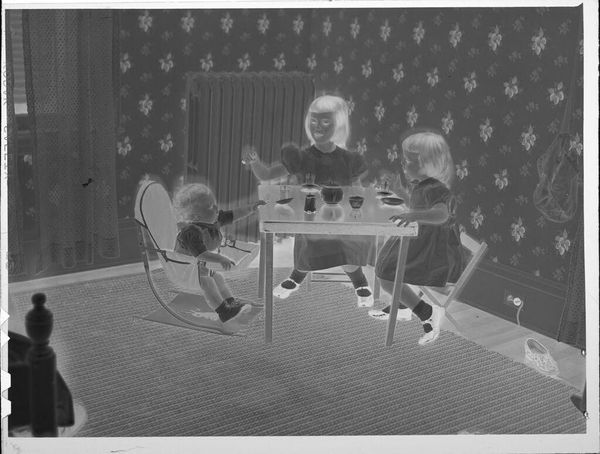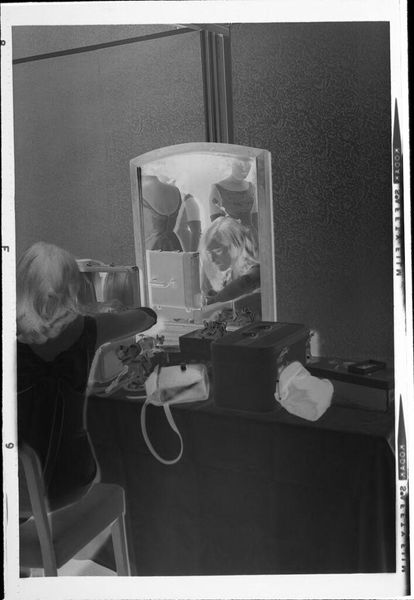
Copyright: Linder,Fair Use
Editor: So, this is Linder’s "TV Sex" from 1978, a black and white photomontage. My first impression is...unsettling. The figures with TV sets for heads—it's weirdly sterile and intimate all at once. What do you make of it? Curator: Unsettling is the perfect word. It reminds me of a dream you can't quite shake. The cool detachment of the TVs juxtaposed with the suggestive poses—Linder is throwing a Molotov cocktail at our perceptions of sexuality and consumerism. She's asking us, aren't we becoming slaves to the screen? Are our desires manufactured? Do we even see *each other* anymore? Editor: The televisions as heads are such a strong statement, so clinical in their form. I find it so memorable, yet chilling. Curator: Yes, clinical is apt. It’s like peering into the petri dish of modern romance, or the lack thereof. You've got these almost interchangeable bodies, punctuated by control panels—the breast replaced by a radio dial—hinting that intimacy is all about finding the right frequency, the correct setting. Editor: So, she is making a link between technology and relationships back then too... How does knowing this artwork has roots in surrealism alter your interpretation, or solidify it, even? Curator: It enriches it, actually. Think of Dalí's melting clocks, but instead of time, Linder is distorting our perception of human connection. It’s that subconscious anxiety about technology infiltrating our most vulnerable spaces, manifested into this... this visual scream. Editor: It really is unforgettable. Thanks, I hadn't fully understood the link to anxieties surrounding technology, which brings another layer to consider about today's society and screen time. Curator: And that's the beauty of art, isn't it? It holds a mirror up to society, forcing us to confront our own bizarre reflections. Makes you think, doesn't it?
Comments
No comments
Be the first to comment and join the conversation on the ultimate creative platform.
